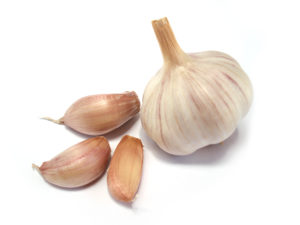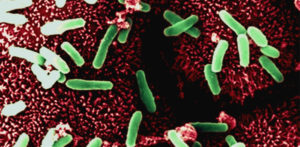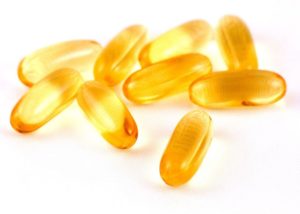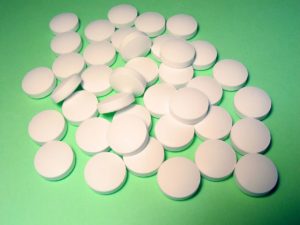 This study found that men who eat a lot of garlic (4 cloves in raw or capsule form) had a "more attractive" body odor to women. This is body odor, which is different than breath odor. Since this study was done in Prague (capital of the Czech Republic), one wonders about cultural biases - is this a group that normally enjoys garlicky foods? What would women who never ate foods containing garlic think about the body odor? The researchers gave an evolutionary explanation, but...first this study needs to be replicated in a group that doesn't normally eat garlic. At any rate, the study results should give reassurance to those men who enjoy eating garlic - it's attractive to women! From Medical Xpress:
This study found that men who eat a lot of garlic (4 cloves in raw or capsule form) had a "more attractive" body odor to women. This is body odor, which is different than breath odor. Since this study was done in Prague (capital of the Czech Republic), one wonders about cultural biases - is this a group that normally enjoys garlicky foods? What would women who never ate foods containing garlic think about the body odor? The researchers gave an evolutionary explanation, but...first this study needs to be replicated in a group that doesn't normally eat garlic. At any rate, the study results should give reassurance to those men who enjoy eating garlic - it's attractive to women! From Medical Xpress:
Research finds men who eat garlic smell more attractive
The beneficial health properties of garlic are well known, but researchers at the University of Stirling and Charles University in Prague have uncovered another less well known and surprising property – that the body odour of men who eat garlic is attractive to women. In a study of 42 men – who each were asked to eat raw garlic, garlic capsules, or no garlic – their body odour was perceived to be 'significantly more attractive' when they had eaten garlic in bulb and capsule form than when they hadn't eaten it.
For the study, 82 women were asked to sniff the odour samples and judge them on their pleasantness, attractiveness, masculinity and intensity. Researchers found the unexpected positive effect was only achieved once the men were eating a substantial amount of garlic. When the men ate 6g of garlic, equivalent to two cloves, with bread and cheese, there was no difference in the ratings between then and when they simply ate the bread and cheese on its own.
But when the dosage was doubled to 12g, or four cloves, the men were reported to smell more attractive than when they hadn't eaten it. In the final experiment, when the men consumed the same amount of garlic, but in capsule form, their body odour was also perceived as more attractive.
Craig Roberts, Professor of Psychology at the University of Stirling, said: "Our results indicate that garlic consumption may have positive effects on the pleasure derived from perceived body odour perhaps due to its health effects....Previous research indicates that many animal species use diet-associated cues to select mates in good physical condition. "As the health benefits of garlic consumption include antioxidant, immunostimulant, cardiovascular, bactericidal and anti-cancer effects, it is plausible that human odour preferences have been shaped by sexual selection.
The study concludes that body odour, in contrast to breath odour, is positively affected by garlic and that these two sources of odour should be strictly differentiated. As breath odour plays an important factor in intimate relationships further studies may be carried out.

 New research found that one course of
New research found that one course of  New research found that negative health effects - 35% increased risk of cardiovascular problems (coronary heart disease, heart attacks, strokes) are when the vitamin D levels are really low (under 15 nanograms per milliliter). Currently many doctors recommend optimal levels for health as somewhere between 35 to 40 ng/ml. One
New research found that negative health effects - 35% increased risk of cardiovascular problems (coronary heart disease, heart attacks, strokes) are when the vitamin D levels are really low (under 15 nanograms per milliliter). Currently many doctors recommend optimal levels for health as somewhere between 35 to 40 ng/ml. One  Nice update from a large crowd sourced study I posted about
Nice update from a large crowd sourced study I posted about  Could this be? Fungal infection being the cause of Alzheimer's disease? Noteworthy from a recent study conducted in Spain: all the Alzheimer's disease (AD) patients had evidence of fungal infections in their brains, central nervous systems, and vascular systems, but none were found in the control subjects (those without Alzheimer's disease). Many of the symptoms of AD (such as inflammation of the central nervous system and activation of the immune system) match those with long-lasting fungal infections. A "microbial cause" has long been suggested as a cause of AD, and interestingly other studies have also found fungal infections in AD patients. The research so far has found
Could this be? Fungal infection being the cause of Alzheimer's disease? Noteworthy from a recent study conducted in Spain: all the Alzheimer's disease (AD) patients had evidence of fungal infections in their brains, central nervous systems, and vascular systems, but none were found in the control subjects (those without Alzheimer's disease). Many of the symptoms of AD (such as inflammation of the central nervous system and activation of the immune system) match those with long-lasting fungal infections. A "microbial cause" has long been suggested as a cause of AD, and interestingly other studies have also found fungal infections in AD patients. The research so far has found  When suffering from cold symptoms or acute sinusitis, there are some products that work for nasal congestion, and thick phlegm and mucus.
When suffering from cold symptoms or acute sinusitis, there are some products that work for nasal congestion, and thick phlegm and mucus.  The microbes living on healthy human skin include bacteria, fungi, and viruses...but 90% of the viruses found on healthy skin in this study are unknown to researchers - thus "
The microbes living on healthy human skin include bacteria, fungi, and viruses...but 90% of the viruses found on healthy skin in this study are unknown to researchers - thus "
 According to a new report, it looks like most people under the age of 50 (throughout the world) have herpes simplex virus infections - whether type 1 or type 2. (Picture is of a herpes simplex virus type 1, at www.virology.net). From Medical Xpress:
According to a new report, it looks like most people under the age of 50 (throughout the world) have herpes simplex virus infections - whether type 1 or type 2. (Picture is of a herpes simplex virus type 1, at www.virology.net). From Medical Xpress: